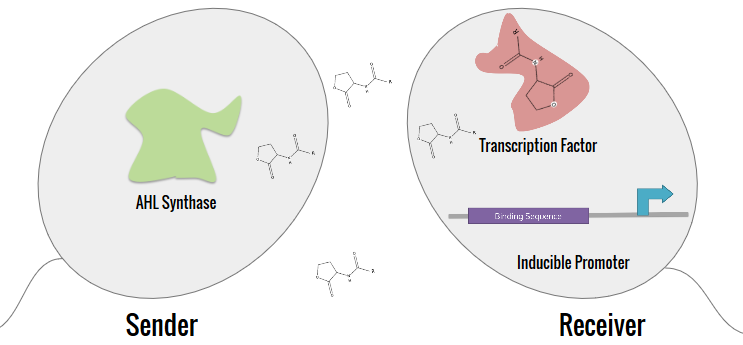| Line 38: | Line 38: | ||
<center><img src="https://static.igem.org/mediawiki/2016/c/c0/T--Arizona_State--Luxmassspec.png"></center> | <center><img src="https://static.igem.org/mediawiki/2016/c/c0/T--Arizona_State--Luxmassspec.png"></center> | ||
<center><img height="200px" src="https://static.igem.org/mediawiki/2016/3/38/T--Arizona_State--aubhsl3d.png"></center> | <center><img height="200px" src="https://static.igem.org/mediawiki/2016/3/38/T--Arizona_State--aubhsl3d.png"></center> | ||
| − | <center><img height=" | + | <center><img height="350px" src="https://static.igem.org/mediawiki/2016/f/f8/T--Arizona_State--massspecaub.png"></center> |
</div> | </div> | ||
Revision as of 23:56, 15 October 2016
Results
Introduction
The expanded characterization of N-acyl homoserine lactone (AHL) systems focused on 10 main systems, which are tabulated in the Project Description. The synthetic system that our team aimed to construct split the system into a Sender (AHL synthase) and a Receiver. By separating the inducer of the AHL from the receptor, crosstalk can be determined between systems.

Bacterial Cloning
E. coli DH5αT was used for the construction of the Senders and Receivers. BL21(DE3) E. coli was used for induction tests. After long transformation, liquid cultures were made using LB broth mixed with ampicillin. All cultures were then appropriately digested and ligated in order to properly construct each part. A modular receiver and modular sender vectors were developed for each of the parts. The designs for these plasmids are shown below.


All Senders and Receivers were gel verified and sequenced with the help of the Arizona State University's Core Laboratory. After confirmation of the successful construction of each part, each part was retransformed to create sufficient stocks for later experiments. In addition, the 6 parts that were submitted to the registry were taken out of their respective modular vectors and placed into psB1C3 Biobrick standard vector.
Inducer Confirmation through Optical Density Measurements
Initially, after the construction of the 20 Receivers and Senders, the focus of our project centered on the Aub system. This was due to the highly uncharacterized nature of the Aub system as well as possible discoveries of orthogonality between Aub and other system receivers. However, we encountered difficulties with the AubR transcription factor, which would not be highly induced in the presence of the Aub AHL. We shifted our focus to the inducers, seeking to create a part collection of 5 novel inducers that were previously unavailable in the iGEM registry. While we had successfully sequenced each of the constructed Senders, a proof-of-concept test was conducted on the inducers to demonstrate the likely production of the AHL.
The AHL gene lies behind a supposedly constitutive Tet promoter as well as an mCherry gene. If mCherry is produced, this will be a likely indicator that the AHL is also being produced. Each inducer was re-transformed into BL21(DE3) E. coli and then the liquid culture was plated on a 96-well plate in triplicate. An 8-hour optical density test was conducted on the 96-well plate, measuring at a wavelength of 600nm to demonstrate overall cellular growth and between 580-610nm to measure mCherry fluorescence. The growth curves of all ten systems are shown below:


Figure on left is growth curve over time measured at 600nm. Figure on right is growth curve over time measured at 580-610nm.
The figures above demonstrate that when the AHL synthase gene is grown in E. coli, the AHL is likely produced. The OD600 measurements affirm that bacterial growth occurred over the 8-hour read. All 10 systems produced mCherry, with 9/10 systems showing a positive growth trend over time. The 10th system, RpaI, had a negative trend in mCherry presence but also had, by far, the highest overall absorbance of mCherry. It is likely that there is a threshold to the mCherry production, which was reached by the Rpa system. These results provide a proof-of-concept that the Senders are able to produce AHLs in our selected chassis, as mCherry lies downstream of the Sender in our system, so the AHL is likely produced.
Mass Spectrometry





